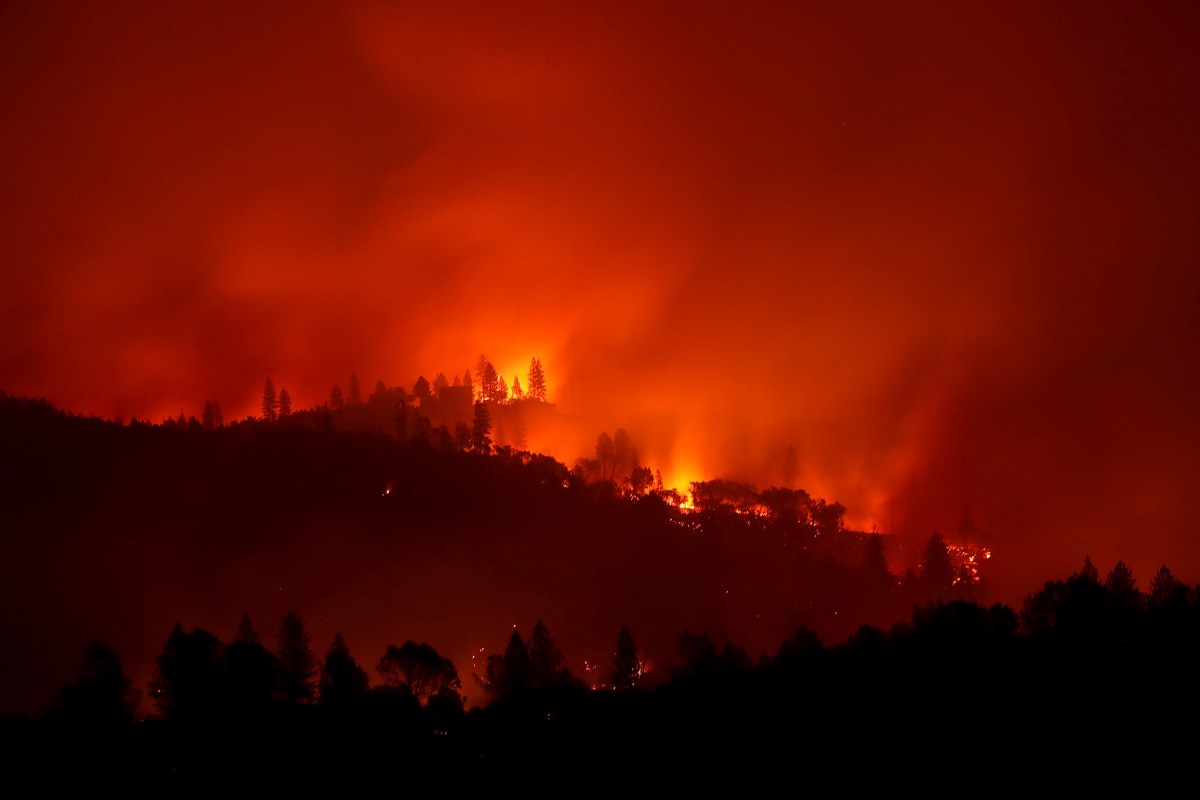The devastating Camp Fire of Northern California was moving at a rate of 80 acres a minute thanks to a combination of three natural factors: dryness, heat and wind.
After first plowing through the town of Paradise last week, home to 27,000 people and 7,200 structures, the fire gained momentum and fuel via destruction, Wired reported. Since then, it has consumed more than 110,000 acres of land and is responsible for claiming at least 42 lives, making it the deadliest wildfire in California history.
The first cause for this unprecedented ruination is strong winds from the east.
“We have a weather event, in this case a downslope windstorm, where, as opposed to the normal westerly winds, we get easterly winds that are cascading off the crest of the Sierra Nevada,” atmospheric scientist Neil Lareau told Wired. “Then they get local accelerations on top of that as they flow down the mountain ranges, kind of like water over a dam.”
California’s extreme dryness and warm weather, even in late fall, are the second and third factors and the primary sources of fire fuel.
“Those fuels (dry vegetation) have been drying out really, really rapidly over the past few days and into this event,” Lareau said. “As the fuels get drier, a smaller and smaller spark can leapfrog the fire through the landscape.
“It’s hot, dry, and windy, are your ingredients,” he continued. “We checked off all three here.”
Thanks for reading InsideHook. Sign up for our daily newsletter and be in the know.


















